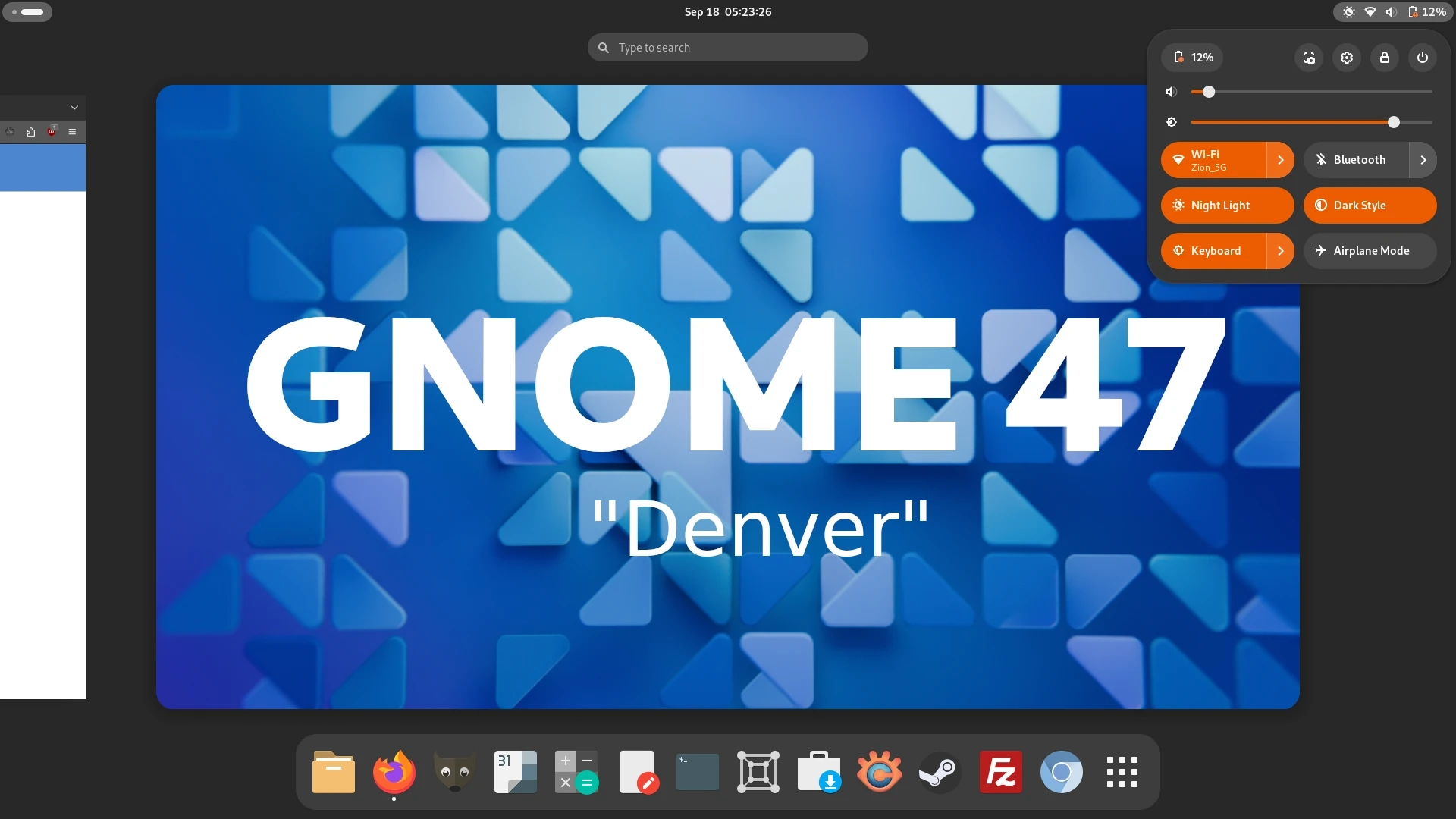The GNOME Project announced the release of GNOME 47, the latest installment in its widely acclaimed desktop environment series for Linux systems, featuring several new enhancements and features.
Key updates in GNOME 47 (dubbed Denver) include the addition of nine accent colors available in the Style menu of the Appearance panel in Settings, a new File Chooser portal for viewing larger thumbnails in applications, and the integration of the XDG dialog protocol on Wayland for setting hints on surfaces such as dialog modality.
Additional features of GNOME 47 comprise DRM lease protocol support, revitalized support for legacy X11 cursor themes, enhanced capabilities for touchpad gestures utilizing three or more fingers, persistent support for remote login sessions, hardware encoding options for screen recording, configurations for tablet tool keybindings and actions, as well as the inclusion of tablet tool pressure ranges.
Moreover, this release marks the introduction of an experimental color management protocol in Mutter, the window and composite manager, preliminary explicit sync features in PipeWire, the development of placement and focus mechanics for always-on-top windows, integration of the notification portal to always utilize the GTK protocol, and the supportive ability to build GNOME Shell via Mutter without X11 support, paving the pathway for a Wayland-centric future.
Numerous enhancements are present as well, including improved notifications on the lock screen and the ability to center the time on the lock screen when using a 12h format, improved monitor matching when restoring your windows on monitor hotplug, improved workspace previews in Window List and Workspace Indicator Shell extensions, and improved detection of non-seekable files in the Evince document viewer.
Nautilus (Files) received a file chooser “choices” menu, the ability to drop items into the file chooser, support for the background menu in the file chooser, the ability to vertically scroll the pathbar, a new Network view, the ability to list physical internal disks in the sidebar by default, a revamped places sidebar, performance improvements to the file search functionality, and support for extracting bzip2 tar archives.
The Epiphany (GNOME Web) web browser introduced a range of enhancements and new features. Included in the updates are a preference toggle for navigation gestures, a feature to adjust brightness and contrast in dark reader mode, a “Not Now” selection in the save password popover, a delete option in the text box context menu, a “Clear” button in the address bar, and support for autofill.
In addition, it includes a new bookmarks search bar, Privacy Report feature, a new shortcut Ctrl+Shift+Delete to open the Clear Website Data dialog, capabilities for importing passwords from CSV files, an option to set an image as a wallpaper for those using the browser as a Flatpak app, detailed at this link, a confirmation dialog for WebExtension installations, and numerous interface enhancements.
Additionally, the GNOME Calendar has been updated to support importing ICS files via drag-and-drop, enhancements to the file importer dialog, and better spacing in the Month view. The GNOME Console has improved with an expanded preferences dialog featuring options like scrollback size, and restored support for screen readers.
GNOME Software now incorporates a plugin to simplify the setup of DKMS and akmods keys under Secure Boot, thus restoring the ability to install the NVIDIA graphics driver with Secure Boot active. Additionally, GNOME System Monitor has updated to a more contemporary UI for dialogs and the Disks view, alongside enhancement in initial load graph representation.
The GNOME Text Editor has enhanced its printing features and spellcheck capabilities, plus adjustments in coloring to align better with the platform’s aesthetic. The Orca screen reader has improved compatibility with Wayland and has introduced several new functionalities. GNOME Sudoku now features a new window for keyboard shortcuts and supports zooming using the mouse wheel. Meanwhile, GNOME Remote Desktop now allows entry of new credentials via standard input using grdctl.
GNOME Maps has added playground symbols and supported dark mode while mapping public transit routes, along with integrating Transitous for transit route planning. Loupe, the image viewer, now accurately recognizes non-transparent images and applies optimal scaling during image rotations initiated just after opening. GNOME Initial Setup has updated its Password page slightly, incorporating a space for creating an optional password hint.
GNOME Control Center (Settings) has introduced an updated “Add User” dialog, enhancements to password requirements based on /etc/security/pwquality.conf, compatibility with the new gnome-remote-desktop server configuration DBus interface, added functionality for setting up Wacom stylus keyboard shortcuts and monitor switching, and a new MS365 account provider in the Online Accounts panel.
Further significant updates in GNOME 47 include better drag and drop capabilities between X11 and Wayland clients, heightened support for hybrid systems (AMD/NVIDIA or Intel/NVIDIA), the capability to recover from failed updates on secondary GPUs, more dependable startup notifications in the overview, enhanced support for smartcard logins, and the implementation of prioritized placement and focus for always-on-top windows.
Additionally, GNOME 47 introduces support for playing Virtual Reality (VR) games on Wayland desktop sessions, improves fractional display scaling to better accommodate legacy X11 apps, and prepares the necessary technology for reliable and hardware-accelerated screen sharing, particularly for systems with NVIDIA proprietary graphics drivers.
Many additional minor improvements are also present in this release, so for more detailed information, visit the release notes, and for further insights, check the accompanying video. The GNOME 47 desktop environment is set to be incorporated into the stable software repositories of several popular distributions soon and will serve as the default desktop in forthcoming major distro releases such as Fedora Linux 41 Workstation and Ubuntu 24.10.
Last updated 7 hours ago
